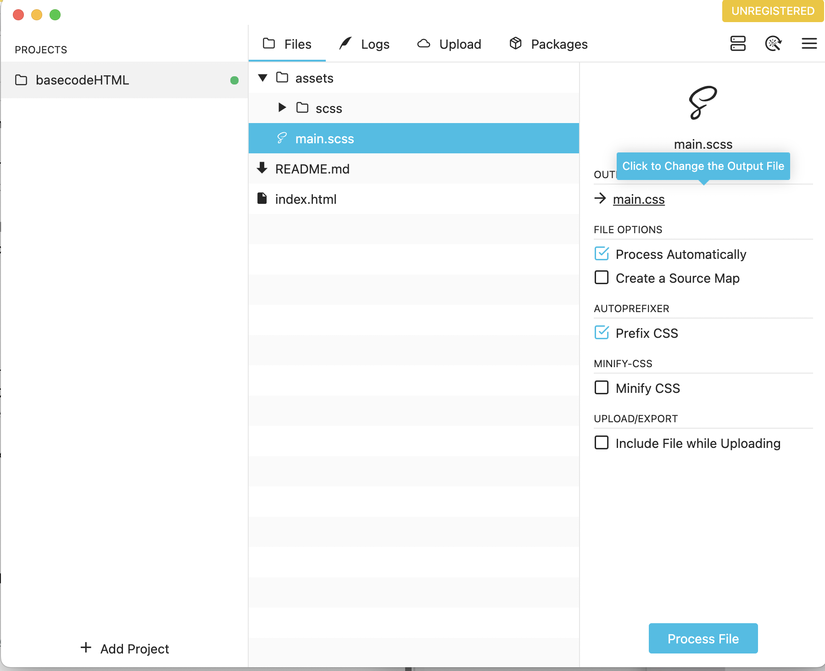

First, create an empty file in the /sass folder and call it style.scss. scss, and it would be valid Sass that CodeKit can compile. The first thing I recommend adding to the newly-created style.scss file is the CSS reset: html, body, div, span, applet, object, iframe,h1, h2, h3, h4, h5, h6, p, blockquote, pre, a, abbr, acronym, address, big, cite, code,del, dfn, em, font, img, ins, kbd, q, s, samp,small, strike, strong, sub, sup, tt, var,b, u, i, center,dl, dt, dd, ol, ul, li,fieldset, form, label, legend,table, caption, tbody, tfoot, thead, tr, th, td, article, aside, canvas, details, figcaption, figure, footer, header, hgroup, menu, nav, section, summary, time, mark, audio, video, svg, hr … This is handy if you want to take advantage of a few Sass features in an existing CSS file. The reset is ordinary CSS, but that doesn’t matter because a.

When you save style.scss, it will display in CodeKit’s list of files: Select the refresh icon on the bottom left to see the style.scss file in CodeKit scss file can understand both Sass and CSS, and CodeKit compiles them together. Next, you can confirm that CodeKit is compiling as expected. Select the style.scss file from the list to see the path where CodeKit will compile the style.css file. Optimizing CSS & JavaScript CSS and JavaScript in External Files css: Select the style.scss file and choose “Compile” to compile the. Previously, we talked about how important it is to reduce HTTP requests if you want to have fast-loading web pages.
#Prepros scss code#
Wouldn't it be logical, then, to put all of your CSS and JavaScript inline into the source code of the HTML page that needs it? The obvious benefit would be that we'd save some HTTP requests, since CSS and JavaScript wouldn't have to be downloaded separately anymore. However, there's a big catch: we would have to transfer these contents to the user on every subsequent page load, again.


 0 kommentar(er)
0 kommentar(er)
